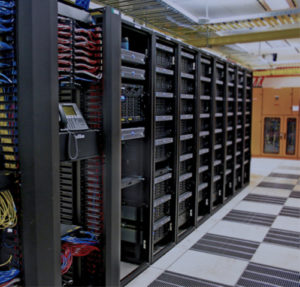 Integrated IT Services have the potential to take away the burden of infrastructure management to enhance productivity and security. You corporation gets comprehensive support from a team of qualified and experienced experts round the clock. You don’t need to worry about backups, updates, firewalls, mobility, connectivity, resource pooling, and product procurement. What if you were to get all these services at a fraction of the cost incurred now? The idea sounds great. However, you need to know about the possibility, feasibility, and affordability of these services before taking a decision. This article highlights some of the critical elements you need to consider before outsourcing.
Integrated IT Services have the potential to take away the burden of infrastructure management to enhance productivity and security. You corporation gets comprehensive support from a team of qualified and experienced experts round the clock. You don’t need to worry about backups, updates, firewalls, mobility, connectivity, resource pooling, and product procurement. What if you were to get all these services at a fraction of the cost incurred now? The idea sounds great. However, you need to know about the possibility, feasibility, and affordability of these services before taking a decision. This article highlights some of the critical elements you need to consider before outsourcing.
IT Services Range
- Installation and Configuration: – If your IT infrastructure is new, the service providers can take care of installation of hardware, operating system, network devices, cables, and power supplies. The next step is to configure the client and servers for protocols and connectivity. Installation of mail server, (physical or virtual), firewall, internet, intranet, and other features are essential in the initial stages. The configuration of domain controllers, backup servers, and external devices is a critical service your service provider should provide.
- Replication and Mirroring: – Data replication across multiple domains is possible when the IT infrastructure of your organization is massive. For the smaller networks, they can recommend mirroring and local data backup.
- Client System Updates: – They include installation and configuration of application software (Licensed and open source), system software (for example, device drivers), printers, scanners, etc.
- External Devices: – They include connectivity to biometric access control, surveillance systems, etc. The service provider should be able to extend the connectivity to the latest technology based devices and applications in real time.
Leveraging Points of IT Services
- Middleware: – Timely availability of middleware services can extend the lifetime of the hardware, network devices, cabling, and other elements in the architecture.
- Client: – Software support can update the PCs, laptops, smart-phones, and mobile devices used by your employees in real time.
- Server: – Server support can ensure security certificates, operating systems, data management, replication, protocols, backup, restore, firewalls, mail server, and other core services.
- Power: – Power services can manage uninterrupted supply, distribution units, safety devices, and surge protection.
The Efficient IT Service Provider
You can search for an efficient IT service provider, based on specific qualifications and experience in technology, skills, diagnosis, risk management, troubleshooting, quality & service standards, innovation, flexibility, and scalability.
- Payback: – Your investments in the integrated IT services should be able to help you in cost savings. The savings can be on security services, desktop services, hosting, technical support, and the others listed above. You should be able to get the statistical data on the savings from your IT service provider after the deployment.
- Experience: – This factor plays a critical role in shaping the quality and punctuality of the IT service provider company. They need to have the potential to meet all your on-demand services in real time. Protection of privacy and security is the primary criterion to be considered. The experienced company will have the skills and technology for deploying the most trusted architecture, protocols, firewalls and accessibility devices. The anticipation of problems is possible when they use the right diagnostic tools for detecting the potential defects. They can take preventive measures during regular maintenance schedules. Their corrective actions can reduce the downtime after the breakdown and restore the system’s operations. They will know prioritization and implementation of services. Availability and Accountability for the actions taken are the key factors that qualify your IT service provider to be trustworthy.
- Service Levels: – Understanding the performance metrics is the key feature of an efficient service provider company. Achieving this goal is possible when the company gives you an option for the service level agreement (SLA). A typical SLA will contain round the clock problem reporting, technical support (phone and onsite), emergency support (always onsite), remote monitoring, repairs and updates, hardware replacement, and regular maintenance. You need to analyze the warranty, and the levels of service for basic, advanced, and premium packages. Compare the incurred costs and savings.
IT Services Quality and Continuity
- Corrective Actions: – The service provider company should minimize the impact of any defects and damages when they are uncontrollable. They should reduce the time gap between the breakdown and restoration. They can also provide provisional systems for critical services to ensure business continuity for your organization.
- Preventive Actions: – The service provider should be able to predict the potential risks and defects during the maintenance time. They can diagnose the entire infrastructure and mark all the potential risks for your analysis. Then they suggest the best practices for problem resolving. They don’t recommend repairs when the parts and components require replacements and vice versa.
- Flexible Approach: – Cause analysis of a breakdown becomes realistic when the service provider can think of multiple angles for the approach. At the same time, they should be able to zero-in on the root causes and list them out. This approach helps in developing the most feasible and affordable solutions to the problems. Their aim should be to prevent the recurrence of the same pattern of the issues in the future.
- Business Continuity: – The service provider should be able to ensure business continuity for your organization. They can do it by providing connectivity between all the components of your IT infrastructure with the external world. You should be able to utilize the internet, phones, fax, mail server, and other communication with your clients, marketing team, suppliers, and vendors. They should ensure zero downtime regardless of the nature and intensity of the internal infrastructure breakdown.
- Affordability: – The service providers should be able to suggest you the best practices for selection of hardware, systems, network utilities, software, OS, etc, based on your affordability. They can recommend the cost-effective alternates that can help save on the expenses while ensuring the best quality of services according to the SLA.




